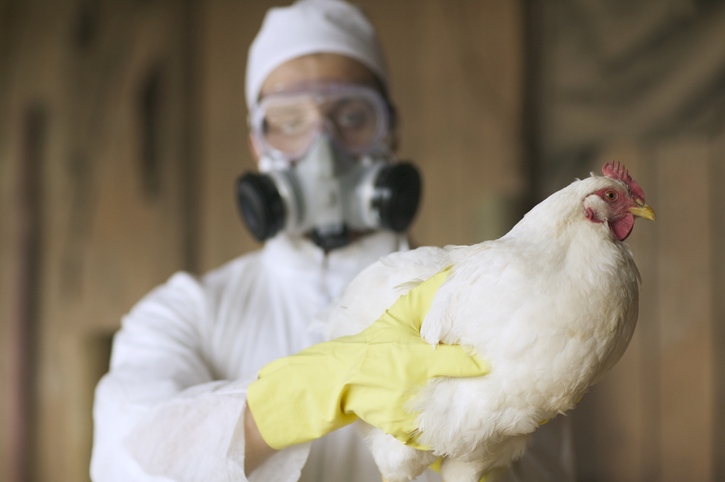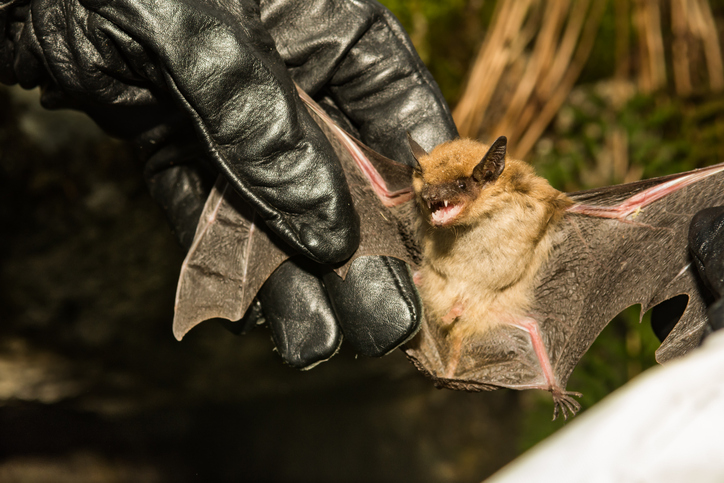The federal government is allocating an additional $1 billion to combat the avian flu, an outbreak of which led to the killing of millions of healthy chickens and soaring egg prices over the past 12 months.
Agriculture Secretary Brooke L. Rollins unveiled a “comprehensive strategy to curb highly pathogenic avian influenza (HPAI), protect the U.S. poultry industry, and lower egg prices,” in an article in The Wall Street Journal on February 26. The U.S. Department of Agriculture (USDA) will spend $1 billion on the plan, said Rollins, with up to $500 million allocated to improve “biosecurity” measures and $400 million going to farmers who lost their flocks.
The USDA announced the availability of $100 million in funding to “identify and foster innovative solutions to fight highly pathogenic avian influenza (HPAI) and directly support America’s farmers and ranchers,” in a March 20 press release.
The avian flu “has resulted in about 166 million laying hens being culled since 2022,” wrote Rollins.
The killing of so many birds caused the price of eggs to soar temporarily. State regulations contributed to the price spike, said Rollins, with mandatory minimum space requirements for fowl in California “increasing production costs and contributing to the Golden State’s average price of $9.68 a dozen.”
Pandemic Panic Redux?
Bird flu does not pose a danger to humans, says John Dale Dunn, M.D., J.D., a policy advisor to The Heartland Institute, which publishes Health Care News.
“The public health people prematurely declared a bird flu pandemic about 15 years ago, and everybody went nuts,” said Dunn. “People who lived with chickens in their pathetic dwellings got the bird flu, and all of a sudden everybody is going nuts.”
Killing birds that are not sick will not stop the spread of bird flu, says Dunn.
“Mass culling for bird flu is not justified, in addition to which the test [for the virus] is unreliable, just like the Covid tests,” said Dunn. “A [chicken] population can develop herd immunity, and natural immunity is important in stopping the virus now and in the future.”
Public Health ‘Overkill’
The virus that causes bird flu is spread principally by wild ducks and geese, says Dunn.
“The virus is being transmitted by feral birds,” said Dunn. “Culling doesn’t stop it; it just destroys production of domestic eating chickens and egg layers.
“Public health people are just being too damn anxious to be powerful and save the planet,” said Dunn. “That situation often ends with what is commonly called overkill.”
Though the virus has reportedly spread to cows, humans, and cats fed raw chicken meat, it poses little danger to the public health, says Dunn.
“Transmission to humans or other birds or mammals is not as serious as is being claimed and can easily be reduced by isolation of suspect bird populations,” said Dunn. “They are not free-range chickens—it’s chickens in gigantic henhouses they are killing.”
Food Supply Safety
The bird flu outbreak poses little danger to consumers, and the only reported human fatality was to a chicken-farm worker, says Jane Orient, M.D., executive director of the Association of American Physicians and Surgeons.
“As far as I know, the eggs and meat from exposed chickens that are not sick will not transmit the disease to humans,” said Orient. “I think it likely that overvaccination may be creating more problems than it solves.”
Chicken-Killing Government Money
Most of the hens killed by farmers were not sick, and many millions were in coops that had no cases of bird flu, press reports stated.
Some farms that culled their chickens have experienced repeated outbreaks and received multiple indemnity payments, wrote epidemiologist Nicolas Hulsher, M.P.H. in an article at the Focal Points Substack in February.
In 2024, the USDA spent more than $1.25 billion on indemnity payments for chicken farmers who culled their coops, wrote Hulsher.
“The strikingly large sum of indemnity payments not only incentivizes farmers to comply with state-run mass killing of their animals but also represents a serious misuse of taxpayer money, as mass culling triggers a cascade of severe downstream consequences,” wrote Hulsher.
Big Pharma Bird Vaccines
Like human flu viruses, HPAI viruses mutate, so there were no specific vaccines for chickens when the current variant, or clade, was identified in the spring of 2024. Drug developer Zoetis received “a conditional license for its Avian Influenza Vaccine, H5N2 Subtype, Killed Virus,” from the USDA on February 14, 2025, states a company press release.
There is no U.S. mandate to vaccinate poultry for bird flu, says Zoetis.
“The decision to vaccinate commercial poultry flocks against HPAI rests solely with national regulatory authorities in partnership with the poultry industry,” said Zoetis in a news release.
The virus has affected poultry in other countries. France conducted mass vaccination campaigns for ducks and chickens, which have been so successful that fowl will be allowed outdoors, Reuters reported on March 26.
The drug maker Moderna received a $590 million contract from the U.S. Department of Health and Human Services to develop an mRNA bird flu vaccine for humans, using the same technology as its COVID-19 vaccine, in the final days of the Biden administration. The Trump administration is reviewing the contract, Bloomberg reported on February 26.
Joe Barnett ([email protected]) writes from Arlington, Texas.




